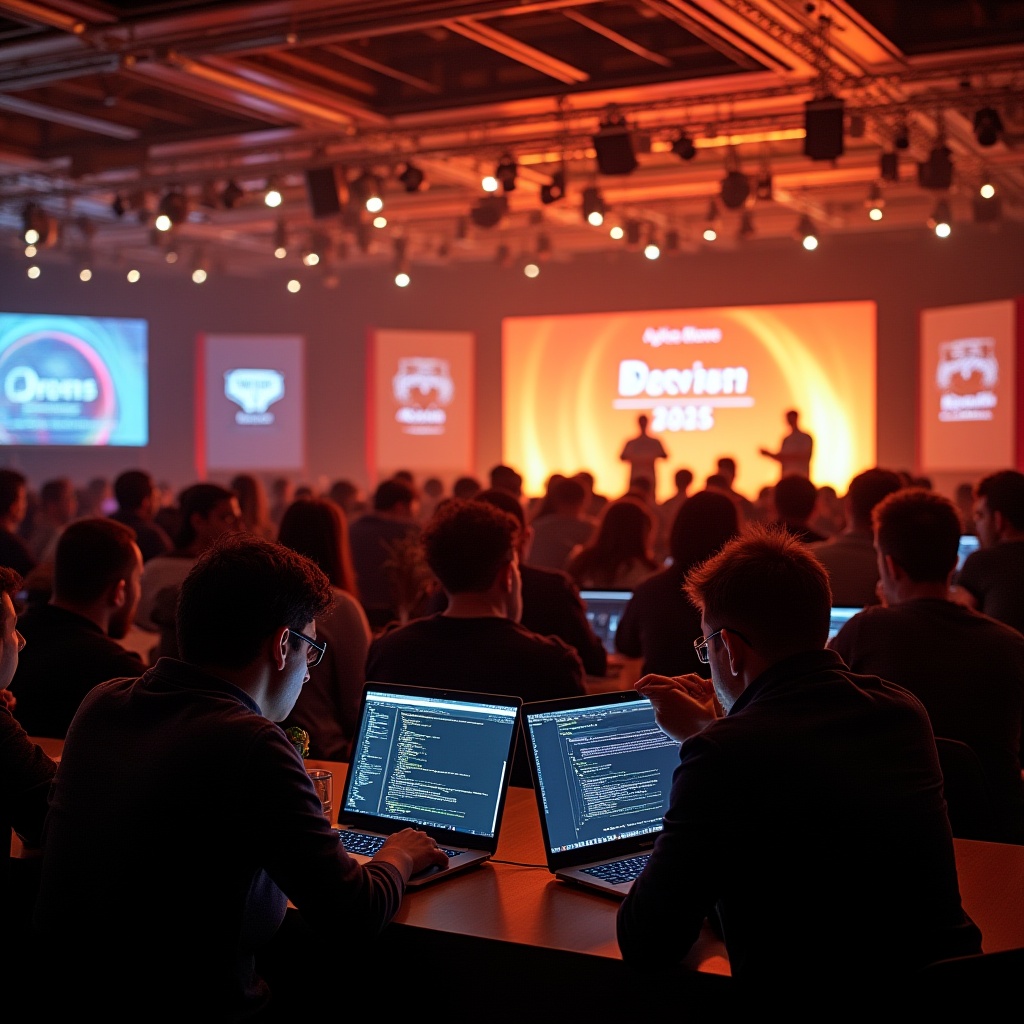Klaytn and Finschia have joined forces to create a single, unified blockchain ecosystem—now known as Kaia. This merger represents a bold vision to build Asia’s leading Web3 infrastructure. Throughout this article, I’ll walk you through everything you need to know: how these two platforms came together, what the new tokenomics look like, how governance has shifted, the technical underpinnings of the combined network, the expanding landscape of decentralized applications, and where Kaia is headed next. My goal is to give you clear, up-to-date facts—no fluff, no jargon—so you can understand what this merger means for crypto investors and token holders like yourself.
Background: Understanding Klaytn and Finschia
Klaytn: Enterprise-Grade Blockchain from Kakao
Let’s start by looking at where each platform began. Klaytn launched in 2019 under the umbrella of Kakao, one of South Korea’s biggest internet companies. It was designed with enterprises in mind, offering a hybrid consensus mechanism that blends Proof-of-Work and Proof-of-Stake. The result? High throughput, low latency, and the ability to process thousands of transactions per second. Klaytn’s flexible architecture lets businesses spin up their own dedicated sidechains—called Service Chains—tailored to specific use cases in areas like entertainment, finance, and retail.
Finschia: Blockchain Innovation from LINE
Finschia, originally called the LINE Blockchain, also debuted in 2019. Its creator, LINE Corporation (best known for the LINE messaging app), saw an opportunity to weave blockchain functionality directly into social and communication platforms. By 2023, Finschia had launched its third-generation mainnet. It uses the CosmWasm virtual machine, enabling smart contracts written in WebAssembly—often in Rust—to run without network-wide upgrades or restarts. Finschia’s native token, FNSA, powers transactions, staking, and governance within its network. Over time, it gained traction in markets such as Japan, Taiwan, and Thailand, thanks to LINE’s massive user base.
Synergy and Strategic Alignment
Individually, Klaytn and Finschia made waves in their respective markets. When they set out to merge—under the banner of Project Dragon—the idea was simple: combine Klaytn’s enterprise-grade strengths with Finschia’s social-media-driven ecosystem to create a blockchain network that could support hundreds of decentralized applications and tens of millions of users across Asia.
The Merger: Objectives and Vision
Project Dragon isn’t just a tie-up; it’s a strategic consolidation with clear goals. First, the merger aims to build Asia’s most comprehensive blockchain ecosystem. By uniting more than 420 decentralized applications and bringing together over 45 governance partners, Kaia immediately claims a far larger footprint than either individual platform did on its own. Rather than competing, Klaytn and Finschia can now pool resources—developer talent, node infrastructure, and user communities—to accelerate innovation.
Establishing Asia’s Premier Blockchain Ecosystem
A big piece of this vision is interoperability. Kaia supports both the Ethereum Virtual Machine (EVM) and CosmWasm. Developers who built on Ethereum or who prefer Rust-based smart contracts can find a home here. In practice, that means a Klaytn-era DApp that used Solidity can run alongside a Finschia-era DApp built in CosmWasm, all under the same network. That flexibility lowers the barrier to entry for projects that might otherwise have to choose one ecosystem or the other.
Unifying Governance Structures
Governance has also evolved. The merged entity is governed by a single foundation based out of Abu Dhabi, bringing together stakeholders from both original networks. Over 90 percent of Klaytn governance members voted in favor of merging, and 95 percent of Finschia members did likewise, signaling strong community support. The new governance council includes representatives from technology firms, financial institutions, and academic institutions, ensuring a broad range of voices help steer the network’s future.
Innovating Tokenomics
Finally, the merger sets the stage for a unified tokenomics model. Rather than juggling separate KLAY and FNSA tokens, holders now work with a single native coin—KAIA. This simplifies the ecosystem and aligns incentives across the board, which I’ll explain in more detail next.
Tokenomics: Transitioning to the New Native Coin
One of the most important changes for investors is the move to a single token: KAIA. Under this new model, both KLAY and FNSA tokens have been replaced. KLAY balances were automatically converted to KAIA, with no action required from holders. FNSA holders took part in a manual swap—burning their FNSA tokens in exchange for KAIA at a set rate. This consolidation eliminates confusion and helps drive liquidity into a single, more robust market.
Sustainable Tokenomics Model
KAIA’s tokenomics emphasize sustainability and deflationary pressure. Rather than the higher inflation rates seen in some legacy networks, KAIA starts with a lower base inflation. At the same time, the system employs a three-layer burning mechanism: transaction fees, validator operations, and ecosystem fund allocations all trigger token burns. Over time, these burns will reduce the total supply, potentially creating upward pressure on price as demand grows.
Zero Reserve Tokenomics
Another key element is “Zero Reserve” tokenomics. About 24 percent of KAIA’s initial supply was burned immediately, replacing most of the non-circulating KLAY. That means when KAIA launched, a significant portion of tokens were permanently removed from circulation. The network treasury now operates via two funds—one for ecosystem grants and one for infrastructure—both funded by block rewards. In practical terms, this means future token issuance is transparent, and there’s no hidden stockpile waiting to be dumped on the market. For investors, it’s a model that aligns long-term interests: if the network grows, so does the value of tokens held.
Governance: Decentralization and Community Participation
Unified Governance Framework
Kaia’s governance model places real power in the hands of token holders. Instead of a handful of insiders dictating the network’s direction, anyone with KAIA tokens can delegate their voting power to a preferred validator. Validators aren’t just block producers—they also put forward network proposals and participate in discussions around upgrades, fees, and treasury spending. By staking KAIA and delegating to validators, token holders have a direct say in the network’s roadmap.
Public Delegation Mechanism
The Governance Council complements this model by providing strategic oversight. It includes representatives from diverse sectors—technology, finance, education—ensuring decisions aren’t made in a vacuum. Every proposal, vote, and outcome is transparently recorded, so you can see exactly why a decision passed or failed. This level of openness builds trust. Rather than wondering what’s happening behind the scenes, you can track every discussion and outcome, keeping you informed and engaged.
Transparent Decision-Making Processes
Kaia’s governance structure represents a significant advancement in decentralized network management. Through mechanisms like public delegation and inclusive council participation, Kaia ensures that its community remains at the forefront of its development and success.
Technical Integration: Merging EVM and CosmWasm
Dual Virtual Machine Support: EVM and CosmWasm
From a developer’s perspective, the heart of Kaia is its dual virtual machine support. On one side, there’s EVM compatibility. That means Ethereum-based smart contracts, tools like Remix, Truffle, or Hardhat, and familiar Solidity code can be deployed on Kaia with minimal adjustments. Existing DeFi projects, NFT marketplaces, and DAO tools can find a new home here without rewriting from scratch.
Enhanced Interoperability and Developer Experience
On the other side, Kaia natively supports CosmWasm, the smart contract platform originally developed for Cosmos blockchains. CosmWasm lets you write contracts in Rust, AssemblyScript, or Go, compile them to WebAssembly, and run them efficiently on-chain. This broadens the developer base, allowing Rust-focused teams to build alongside Solidity-focused teams, all on the same chain.
Performance and Scalability Enhancements
Performance-wise, Kaia delivers one-second block times and immediate finality. That’s crucial for applications where speed matters—real-time trading, gaming, or high-frequency microtransactions. The network’s architecture ensures that as usage grows, it can scale horizontally by adding more nodes, keeping transaction fees low and confirmation times fast.
Seamless Migration and Ecosystem Expansion
To facilitate the transition for existing DApps and services from Klaytn and Finschia, Kaia offers comprehensive support for both EVM and CosmWasm environments. This ensures that projects can migrate with minimal friction, preserving their functionality and user base. The integration also opens opportunities for new collaborations and partnerships, as developers can build applications that leverage the combined capabilities of both virtual machines.
Ecosystem Expansion: DApps, DeFi, and Real-World Use Cases
Integration with Messaging Platforms
Since the merger, the Kaia ecosystem has grown to host over 420 decentralized applications. These span gaming, social networking, content creation, and more. Developers benefit from Kaia’s support for both EVM and CosmWasm, meaning they can choose whichever environment suits their project best. As a user, that translates to a wider variety of apps to explore—from play-to-earn games to decentralized social platforms, all under one roof.
Expansion of Decentralized Applications (DApps)
Decentralized finance on Kaia has also taken off. Lending and borrowing platforms, decentralized exchanges, algorithmic market makers, and yield farming protocols have all found room to grow. Because Kaia integrates directly with messaging apps like KakaoTalk and LINE, users can access DeFi services without downloading a separate wallet app. Imagine sending a token transfer or swapping assets right inside your favorite chat interface. That seamless integration dramatically lowers the onboarding friction for non-technical users.
Growth of Decentralized Finance (DeFi) Platforms
Beyond pure crypto applications, Kaia is moving into real-world asset tokenization. The network is exploring how to represent traditional assets—real estate, stocks, commodities—on-chain. By doing so, Kaia aims to bring liquidity to markets that are typically slow and opaque. Tokenization can unlock new opportunities: fractional ownership of high-value assets, instant settlement, and 24/7 trading without intermediaries. For investors, that means potential exposure to novel asset classes, with blockchain-based transparency and security.
Real-World Asset (RWA) Tokenization
Developer support is another pillar of Kaia’s ecosystem. The network runs regular hackathons, offers grants for promising projects, and maintains comprehensive documentation. That helps encourage fresh ideas and ensures developers have the resources they need to build and scale. Community workshops and online forums further foster collaboration, so you’re never coding in a vacuum.
Developer Support and Community Engagement
Roadmap & Future Outlook: Kaia’s Path to Full Decentralization and Mass Adoption
Transition to Permissionless Validation
Kaia’s roadmap is ambitious. By the third quarter of 2025, the network plans to move to a permissionless validator model. Today, Kaia runs with 42 validator nodes; the goal is to expand that to 100. More validators mean greater decentralization, making the network more secure and resilient against single points of failure. As the community takes on more responsibilities—reviewing proposals, managing the treasury, and selecting validators—decision-making power shifts from a small group to the broader stakeholder base.
Integration with LINE Messenger
In early 2025, Kaia will roll out a Web3 mini-DApp platform inside LINE Messenger. With nearly 200 million monthly active users across Asia, LINE integration is a game-changer. Users can create a Kaia wallet, play blockchain games, buy NFTs, or trade tokens—all within the chat interface they already use daily. That shift bridges the gap between mainstream social apps and decentralized services, making blockchain accessible to anyone with a smartphone.
Introduction of Stablecoins
Stablecoins are next on the docket. Mid-2025 will see the introduction of a USD-backed stablecoin on Kaia. Later in the year, region-specific options—South Korean won and Japanese yen equivalents—will come online. These stablecoins will provide familiar reference points for users wary of cryptocurrency volatility. Whether you’re making a payment, trading assets, or remitting funds, using a stablecoin can remove the guesswork around price swings.
Ecosystem Development and Strategic Investments
Kaia’s Ecosystem Fund will continue to seed innovative projects, especially those leveraging Kaia’s unique strengths: EVM and CosmWasm support, messaging app integration, and deep ties to Asian markets. By investing in startups and established teams alike, Kaia aims to build a rich, self-sustaining ecosystem where useful applications thrive.
Kaia’s Strategic Position in Asia’s Web3 Landscape
The merger of Klaytn and Finschia into Kaia is more than a corporate transaction—it’s a strategic leap toward building Asia’s premier blockchain infrastructure. Investors have much to gain: a unified, deflationary token model; a transparent, community-driven governance structure; technical flexibility that supports both EVM and CosmWasm developers; and seamless integration with mass-market messaging platforms. Whether you’re a long-time KLAY holder, a FNSA evangelist, or simply a blockchain enthusiast looking for the next big opportunity, Kaia offers a compelling story.
By prioritizing decentralization, scalability, and user accessibility, Kaia is well-positioned to drive mass adoption across Asia. The next few quarters promise key milestones: transitioning to permissionless validation, launching mini-DApps in LINE Messenger, rolling out stablecoins, and expanding the validator set. Taken together, these initiatives reflect a clear roadmap toward making blockchain technology part of everyday life. As an investor or token holder, staying informed and engaged now will help you recognize—and capitalize on—the opportunities that lie ahead in Asia’s super-chain ambition.





